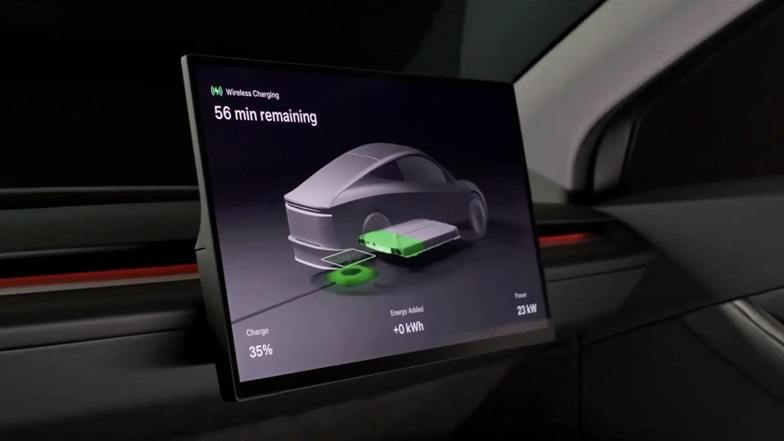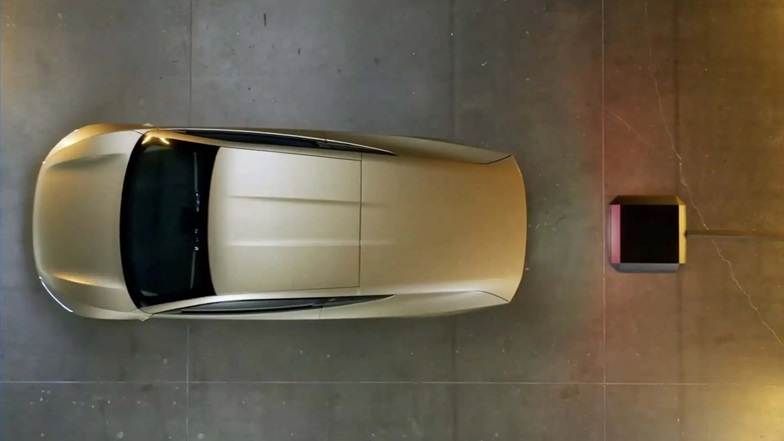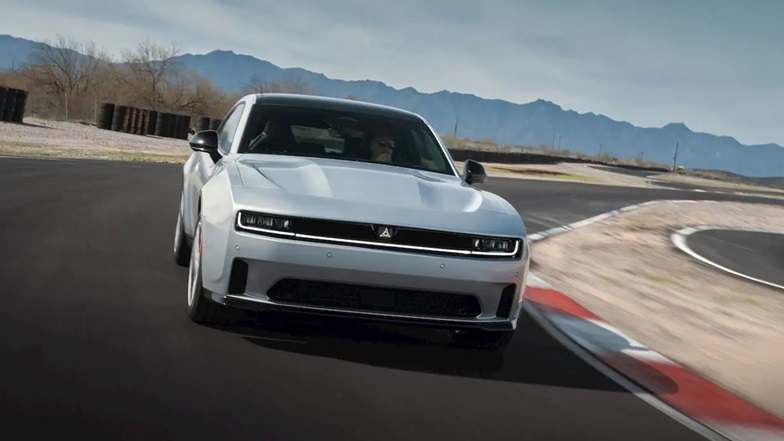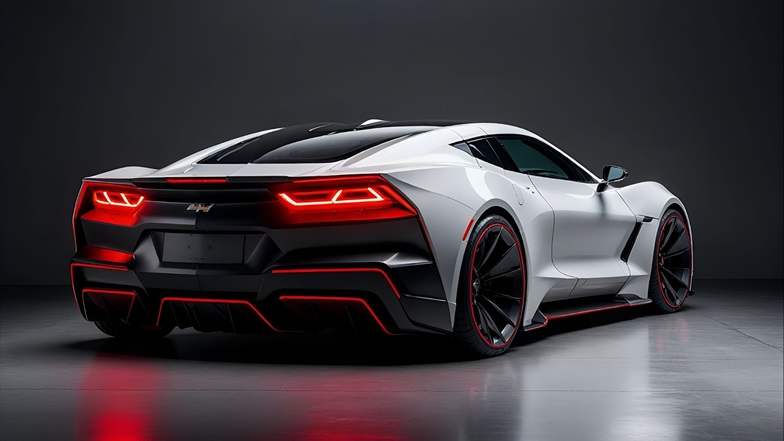Tesla is once again pushing boundaries with its innovative designs and concepts. Last week, the company showcased the Cybercab, a prototype self-driving taxi, which is set to charge wirelessly, according to Tesla CEO Elon Musk. While the idea of wireless charging for an electric vehicle (EV) is intriguing, many details remain uncertain. Based on a leaked video and a recent high-definition clip, we now have a clearer view of how Tesla envisions this futuristic charging system.

Wireless Charging: The Concept
The Cybercab’s wireless charging equipment is located near the rear axle, under the trunk. On the ground, there’s a wireless charging square that operates similarly to wireless chargers for smartphones. In the video, the car begins charging seamlessly when parked over this pad, with charging speeds reaching up to 25 kW. While this speed is impressive for a wireless system, it’s important to remember that wireless charging is generally less efficient than wired connections due to energy loss.
| Feature | Details |
|---|---|
| Charging Method | Wireless |
| Charging Speed | 25 kW |
| Charging Location | Rear of car, near rear axle |
| Efficiency | Potential loss compared to wired |
How Does It Work?
Tesla hasn’t provided many details, and the video leaves us with a few key questions. For instance, it’s unclear whether any physical part of the Cybercab must touch the charging pad to initiate charging. While the animation demonstrates the car charging wirelessly, it doesn’t clarify if there’s a plate or specific component that connects to the charging pad.
Unfortunately, Tesla’s lack of a press office means there’s no straightforward way to get official answers, which adds an air of mystery to the whole concept. That said, the 25 kW charging speed showcased is impressive, particularly for a wireless system, though we still don’t know the exact amperage of the charger.
Estimating Battery Size and Range
The video offers a few clues about the Cybercab’s potential battery size and range. The animation starts with the car’s battery at 35% and shows it quickly charging at its top speed of 25 kW. According to the screen in the video, the Cybercab would take 56 minutes to fully charge.
By doing some quick math, we can estimate that the Cybercab likely has a 35 kWh battery. This calculation is based on a target of 100% charge and the time required to reach that goal. Additionally, Top Gear has reported that Tesla is aiming for a 200-mile range and an efficiency rating of 5.5 kWh per mile. Dividing 200 miles by 5.5 kWh per mile gives us 36.3 kWh, which aligns with our earlier estimate of the battery size.
| Feature | Details |
|---|---|
| Battery Size (estimated) | 35-36 kWh |
| Range Target | 200 miles |
| Efficiency Rating | 5.5 kWh per mile |
| Charging Time | 56 minutes from 35% to full |
Is It Enough?
A 35 kWh battery might seem small compared to many modern EVs, but for a self-driving taxi like the Cybercab, this size could be ideal. The Cybercab is designed for short trips managed by a computer system, which optimizes routes and efficiency. Therefore, it doesn’t need a massive battery like those found in personal electric vehicles that cover longer distances.
Tesla’s self-driving ambitions suggest that the Cybercab would be part of a larger autonomous fleet, where vehicles can return to charging stations throughout the day between rides. For a purpose-built taxi, 35 kWh might be just the right amount of power for the short, frequent trips it will likely perform.

The Bigger Picture: Promises vs. Reality
As exciting as Tesla’s innovations often are, they always come with a degree of uncertainty. Tesla has a history of demonstrating cutting-edge technologies that don’t always make it to market, or at least not within the initial timeline. With slick animations and demos, it’s easy to get swept up in the hype, but it’s important to remain cautious. Whether the Cybercab’s wireless charging system or its self-driving capabilities will materialize as promised is still unclear.
| Tesla Promises | Reality Check |
|---|---|
| Wireless charging at 25 kW | Impressive but less efficient than wired systems |
| 35 kWh battery | Small but suitable for short journeys |
| Self-driving capabilities | Still in development, no release date confirmed |
A Glimpse of the Future
Tesla’s Cybercab offers an exciting glimpse into the future of EVs and wireless charging. While the concept is promising, it’s important to take a wait-and-see approach. The technology behind wireless charging, especially at 25 kW, is still being developed and has yet to prove its reliability and efficiency. For now, the Cybercab remains a concept with enormous potential, but only time will tell if it lives up to the hype.
In the end, Tesla’s relentless pursuit of innovation keeps the industry on its toes. Whether or not the Cybercab becomes a reality, it represents a step forward in the evolving world of electric vehicles. The future may be closer than we think, but for now, we’ll have to keep watching Tesla’s bold ideas unfold.
PEOPLE WHO READ THIS, ALSO READ




